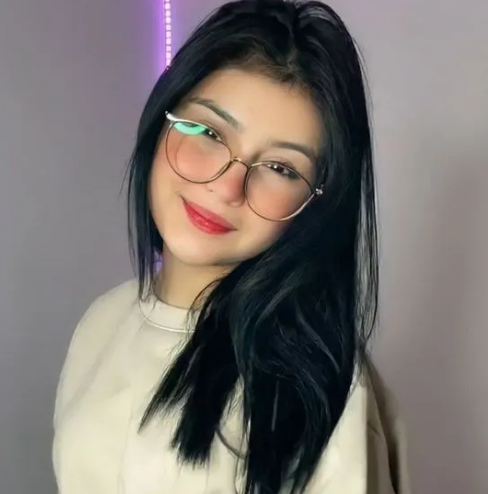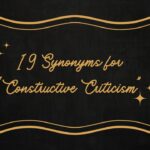Looking for fresh ways to say “stay tuned”? There are plenty of creative and professional alternatives you can use. Phrases like “more to come,” “don’t go anywhere,” or “keep watching” keep your audience engaged.
These expressions are perfect for emails, videos, or social media updates. Whether you’re teasing new content or wrapping up a message, these variations help keep your communication interesting and dynamic. Try mixing it up to better match your tone or audience style.
What Did “Stay Tuned” Mean?
The phrase “stay tuned” originally came from radio and TV, where it meant to keep your device set to the same channel or station. Over time, it became a popular way to tell people to wait for more information or to keep watching or listening.
Now, it’s commonly used in social media, emails, and marketing to build anticipation. It simply means that something new or important is coming soon. The phrase keeps your audience curious and engaged.
Advantages and Disadvantages
- ✅ Advantage: Creates a sense of anticipation and keeps your audience engaged.
- ✅ Advantage: Works well across different platforms like social media, emails, and videos.
- ❌ Disadvantage: Can feel vague if not followed up with specific details or updates.
- ❌ Disadvantage: Overused, which may reduce its impact or make it sound generic.
Synonyms
- More to come
- Don’t go anywhere
- Keep watching
- Coming up next
- Hang tight
- Stay with us
- We’ll be right back
- Keep your eyes peeled
- Stick around
- Up next
- Watch this space
- To be continued
- Catch you soon
- Hold tight
- Keep checking back
- On the way
- Be right back
- Next up
More to come
This phrase suggests that additional content or updates will be shared soon. It’s often used to keep an audience curious and engaged. Suitable for blogs, social media, or product teasers. It builds a sense of anticipation.
Example: “We’ve shared the highlights—more to come!”
Letter:
Thanks for joining us today! We’ve got some exciting updates on the way. More to come, so stay close—we’re just getting started!
Don’t go anywhere
Used often in entertainment or live shows, this phrase urges the audience to stay put. It’s informal and adds energy to your message. Great for video or live stream transitions.
Example: “We’ll be right back—don’t go anywhere!”
Letter:
Hey there! We’re taking a quick break but have more in store. Don’t go anywhere, because the best part is coming right up!
Keep watching
Encourages viewers to continue watching for what’s next. Ideal for video content or tutorial series. It signals that the value continues.
Example: “Want to see the final results? Keep watching!”
Letter:
You’ve seen how we started, but the real magic is next. Keep watching to catch the transformation in full swing!
Coming up next
This phrase sets the stage for what’s about to happen. Commonly used in shows or presentations. It keeps the flow of content moving.
Example: “Coming up next: 5 ways to boost productivity!”
Letter:
We just wrapped up the basics. Coming up next, we’ll dive into advanced techniques that you don’t want to miss!
Hang tight
Casual and friendly, it means to wait patiently. Works well when there’s a short delay or suspense involved. Adds a relaxed tone to communication.
Example: “Hang tight—we’re loading your results!”
Letter:
We’re working on something special behind the scenes. Just hang tight a little longer—your update is almost here!
Stay with us
A gentle way of asking your audience to remain engaged. Commonly used in media or broadcasts. It suggests ongoing value.
Example: “More details coming—stay with us.”
Letter:
The story doesn’t end here. Stay with us, because what happens next will surprise and inspire you!
We’ll be right back
Perfect for temporary breaks in content. It tells your audience you’re not gone for good. Works in live streams or series.
Example: “Short break—we’ll be right back!”
Letter:
Taking a quick pause—but no worries! We’ll be right back with more content you’ll love.
Keep your eyes peeled
A playful and creative way to tell someone to stay alert. Works in informal or suspenseful settings.
Example: “Keep your eyes peeled for our next reveal!”
Letter:
Something awesome is coming soon—keep your eyes peeled and don’t miss the surprise drop tomorrow!
Stick around
Casual and friendly, this phrase keeps your audience nearby. Great for videos or storytelling.
Example: “Stick around, we’re just getting started!”
Letter:
We’re not done yet! Stick around as we uncover more exciting features in the next segment.
Up next
Short and catchy, ideal for transitions. Often used in events or media. It sets clear expectations for what’s to come.
Example: “Up next: Interview with the founder!”
Letter:
Thanks for your patience! Up next, we’re bringing you an exclusive behind-the-scenes look—don’t miss it!
Watch this space
Often used in announcements or product teasers. It means more updates will be shared soon. Works well in branding or marketing.
Example: “Big changes ahead—watch this space.”
Letter:
We’re cooking up something exciting! Watch this space for the big reveal coming later this week.
To be continued
Classic phrase used in storytelling. It keeps suspense and interest alive. Works well in serialized content.
Example: “That’s it for now—to be continued!”
Letter:
That’s the end of this chapter. But don’t worry—to be continued with even more thrills in our next update!
Catch you soon
Friendly and informal, great for signing off while suggesting a return. It keeps the tone light.
Example: “That’s all for now—catch you soon!”
Letter:
Thanks for spending time with us today. We’re wrapping up for now, but we’ll catch you soon with new content!
Hold tight
Used to create suspense or signal a brief delay. Similar to “hang tight” but adds a touch more urgency.
Example: “Hold tight—something big is coming!”
Letter:
We’re just moments away from the big reveal. Hold tight, it’s going to be worth the wait!
Keep checking back
Encourages repeat visits for new updates. Great for websites or blogs. It creates a rhythm of engagement.
Example: “Keep checking back for the latest tips!”
Letter:
There’s more where that came from. Keep checking back for fresh updates every week—we’re just getting started!
On the way
Simple and clear. It shows that something is coming soon. Works well in customer communication.
Example: “Your download is on the way!”
Letter:
You asked, and we listened. Your requested info is on the way—check your inbox shortly!
Be right back
Casual and direct. Common in video or gaming content. It signals a short break or pause.
Example: “Grabbing coffee—be right back!”
Letter:
Taking a quick step away, but don’t go far. Be right back in just a few moments with more fun!
Next up
Similar to “up next,” but adds energy and pace. Works well in lists, events, or presentations.
Example: “Next up: Live Q&A session!”
Letter:
Thanks for sticking with us. Next up, we’re answering your questions live—so stay tuned and join the chat!
Conclusion
Using different ways to say “stay tuned” helps keep your audience engaged, interested, and coming back for more. Whether you’re creating content for videos, blogs, emails, or social media, varying your language adds a fresh, human touch. Each phrase—from “more to come” to “next up”—serves a unique purpose, depending on your tone and context.
Try rotating these alternatives to maintain excitement and improve your overall communication style. In short, keeping your audience connected is all about how you invite them to stick around.

SEO specialist focused on enhancing website visibility, driving organic traffic, and optimizing user experience for better conversions.







